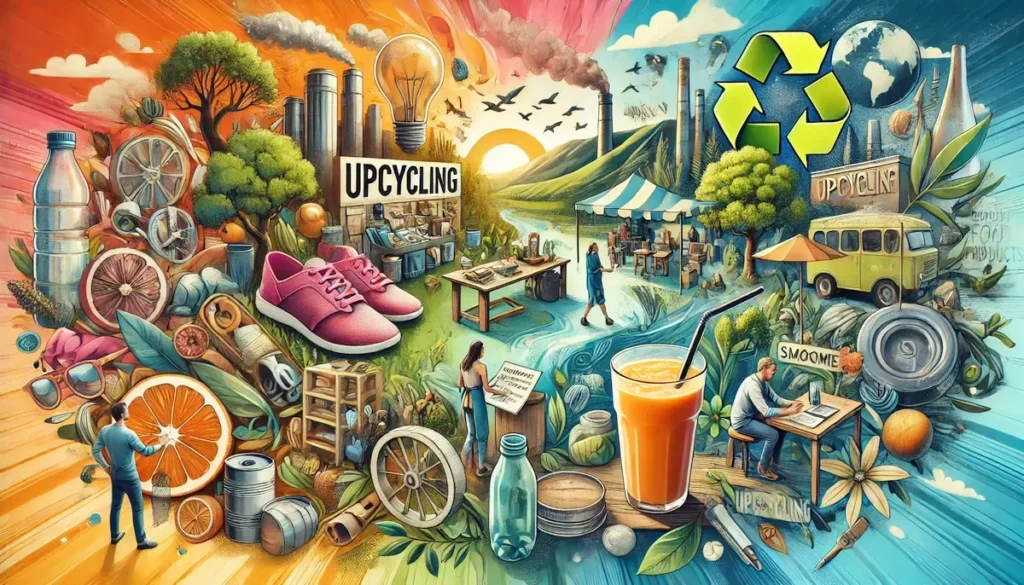Upcycling is the eco-friendly way to transform waste into value
English
Español (Spanish)
简体中文 (Chinese (Simplified))
हिन्दी (Hindi)
Português (Portuguese (Brazil))
Français (French)
Deutsch (German)
Upcycling: Transforming waste into environmental gold
Upcycling is emerging as a vital tool in the fight against environmental degradation, offering a creative and sustainable way to manage waste.
By transforming discarded items into valuable products, upcycling reduces landfill waste, conserves resources, and supports a circular economy.
The rise of upcycling initiatives
Upcycling initiatives are sprouting worldwide, driven by both grassroots movements and major corporations. In South Africa, Upcycle: The Green Initiative has made significant strides in waste management, community education, and poverty alleviation. Their innovative solutions and outreach programs have garnered substantial community support and environmental impact.
In the fashion industry, companies like Patagonia and TerraCycle are leading the way. Patagonia’s Worn Wear program repairs and resells used clothing, while TerraCycle focuses on upcycling a wide range of products, from cosmetics to office supplies. These efforts not only reduce waste but also promote a culture of sustainability and conscious consumption (Brightly, Zenbird).
Upcycling in food and manufacturing
The food industry is also embracing upcycling, transforming food waste into new products. Wastelink, an Indian start-up, converts food waste into animal feed, demonstrating the economic viability of upcycled food products.
Similarly, companies like Nutrapharma and Anina are using discarded fruits and vegetables to create nutritious food items, highlighting the potential of upcycled food to address both waste and nutritional needs (Plastic Truth, EOS Intelligence).
In manufacturing, the focus is on making products more repairable and upgradeable, thus extending their lifecycle. This approach not only reduces waste but also conserves resources and energy. Innovations in bioplastics and renewable materials are making it easier to upcycle a variety of products, further integrating sustainability into industrial processes (WIPO, agood company).

Economic and environmental benefits
Upcycling offers significant environmental benefits. By reducing the need for new raw materials, it cuts down on resource depletion and pollution.
For example, upcycling plastic bottles into shoes prevents plastic waste from accumulating in landfills and reduces the demand for new plastic production, which is energy-intensive and polluting.
Economically, upcycling creates job opportunities and supports small businesses and artisans. It reduces production costs by utilizing low-cost or free raw materials and can generate additional revenue through the sale of upcycled products.
Companies like IKEA, which resells returned furniture, and Farmacy, which uses leftover apple extract in skincare products, are prime examples of how upcycling can be both profitable and sustainable (Brightly, LIVEKINDLY, EOS Intelligence).
Challenges and legal considerations
Despite its benefits, upcycling faces several challenges. Ensuring a consistent supply of quality upcycled materials can be difficult, and there are often legal issues related to intellectual property rights.
Products upcycled from branded materials may infringe on trademarks, leading to potential legal disputes. Navigating these legal landscapes requires careful consideration and collaboration across the supply chain (WIPO).
Moreover, consumer awareness and acceptance remain hurdles. Many people are still unaware of the benefits of upcycled products or hesitant to purchase items made from waste. Education and marketing efforts are critical to changing perceptions and increasing the adoption of upcycled products.
Upcycling is a promising solution to environmental challenges, transforming waste into valuable resources and fostering a sustainable economy. By supporting upcycling initiatives and integrating upcycled products into our lives, we can contribute to a healthier planet and a more sustainable future.
Sources:
- Brightly – What Is Upcycling — and How Does It Benefit the Planet?
- Plastic Reimagined – Upcycling Defined: A Creative Approach to Sustainable Living
- Livekindly – What Is Upcycling, and How Can It Help the Planet?
- WIPO – Upcycling, Sustainability, and IP: What It Means for the World of Fashion
- Zenbird – Upcycling International: 5 Upcycling Ideas from Around the World
- A Good Company – What Is Upcycling and Why It Matters
- EOS Intelligence – Upcycling: A New Trend in the Food Industry
- Hindustan Times – From Trash to Treasure: The Art of Upcycling in Fashion for a Sustainable Future

